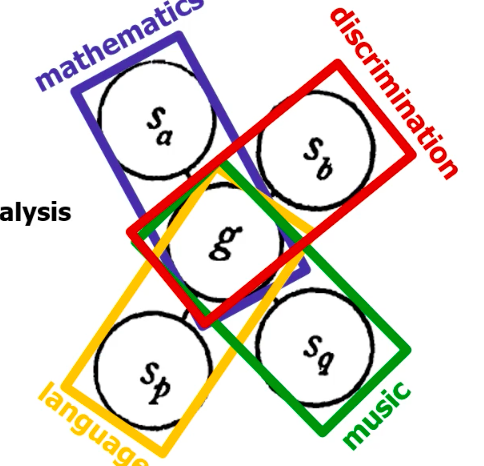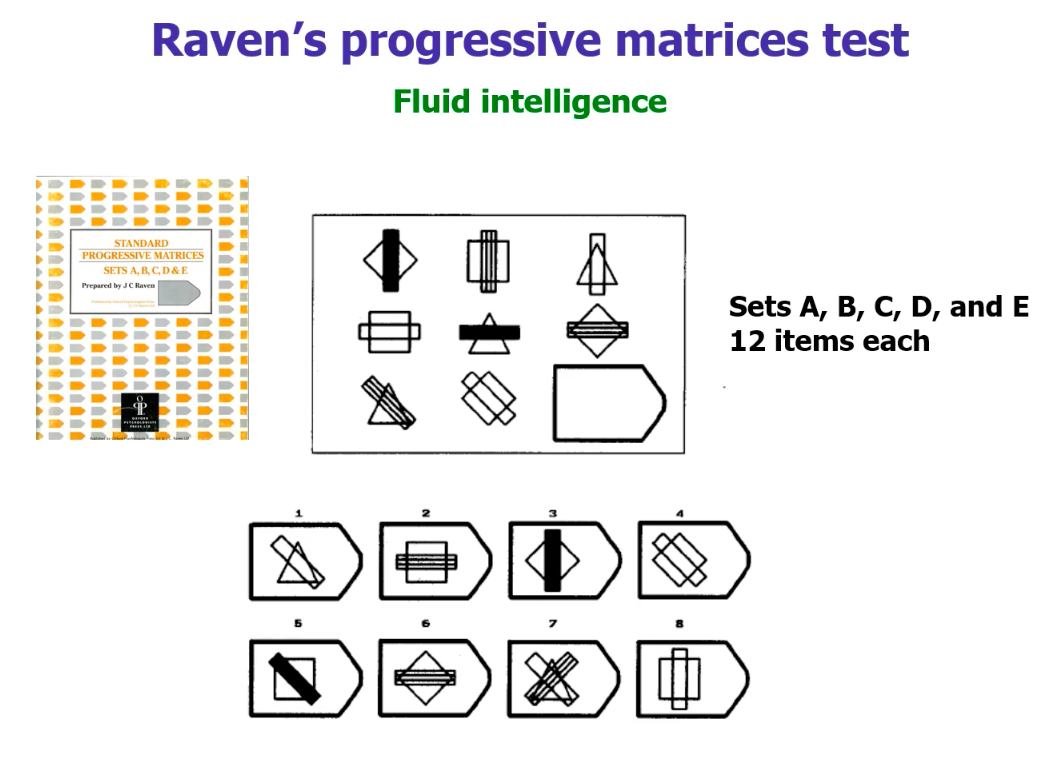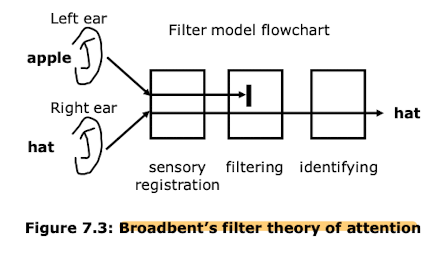From intelligence tests to theory (week four)
0.0(0)
0.0(0)
Card Sorting
1/27
Earn XP
Description and Tags
Study Analytics
Name | Mastery | Learn | Test | Matching | Spaced |
|---|
No study sessions yet.
28 Terms
1
New cards
What is the human genome and how big is it?
__human genome__ \~ genes determining our (mental) abilities; about 30-35 000 genes
\
__important question__ → to what extent are individual differences genetically determined?
\
__important question__ → to what extent are individual differences genetically determined?
2
New cards
What is the issue of predisposition vs upbringing about?
__Galton__ → nature vs nurture/genes vs environment (twin studies)
\
wanted to measure people’s ability to make sensory discriminations → assuming this was linked to general intelligence (in line w/Locke’s assumption that all information gets to the mind via senses aka empiricism)
\
“measurements tell the tale”
\
wanted to measure people’s ability to make sensory discriminations → assuming this was linked to general intelligence (in line w/Locke’s assumption that all information gets to the mind via senses aka empiricism)
\
“measurements tell the tale”
3
New cards
What did Catell create? How is Spearman related to it?
__Catell__ \~ mental tests for measuring elementary psychological abilities (e.g. reaction time, judgement of time, bisection, …)
\
__Spearman__ \~ intelligence measurements (school children’s grades from n°subjects, computing the correlation among the scores → correlations were all positive)
\
\~ correction for measurements, highly varied sample
\
__Spearman__ \~ intelligence measurements (school children’s grades from n°subjects, computing the correlation among the scores → correlations were all positive)
\
\~ correction for measurements, highly varied sample
4
New cards
What did Galton develop and why is it useful?
__correlation coeficient__
\
__normal distribution__ \~ bean machine
\
__standard deviation__ \~ used to quantify the normal distribution
\
__normal distribution__ \~ bean machine
\
__standard deviation__ \~ used to quantify the normal distribution
5
New cards
What did Alfred Binet do? How are Goddart, Stern, & Terman related o it?
__Binet__ \~ designed a test that was able to differentiate between the children with and without learning difficulties (test was a success, however, there was no theory underlying the choice of the tests and materials)
\
__Gaddart__ \~ english version of the Binet test
\
__Stern__ \~ concept of IQ (score on the intelligence test divided by the chronological age)
\
__Terman__ \~ Standford-Binet test (new version of the Binet test for the US)
\
__Gaddart__ \~ english version of the Binet test
\
__Stern__ \~ concept of IQ (score on the intelligence test divided by the chronological age)
\
__Terman__ \~ Standford-Binet test (new version of the Binet test for the US)
6
New cards
What is the g factor and what is the s-factor?
**two-factor account**
* __g-factor__ \~ general intelligence factor that underlies the performance on all tests
\
* __s-factor__ \~ specific ability that each test involves
\
\
* __g-factor__ \~ general intelligence factor that underlies the performance on all tests
\
* __s-factor__ \~ specific ability that each test involves
\
\

7
New cards
How are Wechsler, Raven and Catell related (to Spearman)?
__Wechsler__ \~ WAIS (Wechsler Adult Intelligence Scale) → improvement of the Standford-Binet test (included an IQ distribution)
\
__Raven__ \~ Raven progressive matrices test
\
__R. Catell__ \~ Culture Fair Intelligence Test (aimed at measuring g devoid of cultural influences)
→ proposed that g can be divided into two => fluid and crystallised
\
__Raven__ \~ Raven progressive matrices test
\
__R. Catell__ \~ Culture Fair Intelligence Test (aimed at measuring g devoid of cultural influences)
→ proposed that g can be divided into two => fluid and crystallised
8
New cards
What are the two forms of intelligence?
__crystallised__ \~ ability to use acquired declarative knowledge (vocabulary, facts); improves w/age and experience (educational + cultural experiences + fluid intelligence) → verbal IQ on WAIS
\
__fluid__ \~ procedural ability to solve new problems w/no assumption of prior knowledge (measured by e.g. Raven Progressive Matrices) → performance IQ on WAIS
\
both are correlated w/each other
\
__fluid__ \~ procedural ability to solve new problems w/no assumption of prior knowledge (measured by e.g. Raven Progressive Matrices) → performance IQ on WAIS
\
both are correlated w/each other
9
New cards
How do Raven’s progressive matrices work?

10
New cards
How does WAIS work and what does it measure?
\~ measures both fluid and crystallised intelligence → leads to an IQ score that is normally distributed w/mean at 100 and st.d. of 15
\
__Flynn effect__ \~ test scores increasing almost linearly over the past century
\
__Flynn effect__ \~ test scores increasing almost linearly over the past century
11
New cards
How were the male-female differences measured and how did it evolve?
__variability hypothesis__ \~ in humans and other species males display greater variation in physical characteristics than females do
\
__Thorndike’s extension__ → included mental abilities in the variability hypothesis => men are more likely to have either very high or very low intelligence
\
__hypothesis tested by Hollingworth__ → ratio of men:women decreased w/age → men faced bigger societal expectations → deficiencies were detected at a younger age bc of that → overrepresentation in the sample
\
__Thompson__ \~ found that differences between men and women, on average, were not significant → generally, there were more similarities than differences => women not mentally inferior to men → able to study at universities e.g.
\
__Thorndike’s extension__ → included mental abilities in the variability hypothesis => men are more likely to have either very high or very low intelligence
\
__hypothesis tested by Hollingworth__ → ratio of men:women decreased w/age → men faced bigger societal expectations → deficiencies were detected at a younger age bc of that → overrepresentation in the sample
\
__Thompson__ \~ found that differences between men and women, on average, were not significant → generally, there were more similarities than differences => women not mentally inferior to men → able to study at universities e.g.

12
New cards
How does Lewin’s interaction theory work? What was Lewin first to do?
\~ put emphasis on both the person and the environment (e.g. the momentary social situation) → founder of social psychology
\
first to study group dynamics
\
__B = f(P,E)__ \~ behaviour is the function of the personal characteristics and environment
\
__force field analysis__ \~ attempt to examine the forces influencing a (social) situation that can either be helping or hindering a goal
\
first to study group dynamics
\
__B = f(P,E)__ \~ behaviour is the function of the personal characteristics and environment
\
__force field analysis__ \~ attempt to examine the forces influencing a (social) situation that can either be helping or hindering a goal
13
New cards
What is Charlotte Bühler known for?
\~ __family studies__ → how other family members influence the studied subject
14
New cards
How did studies in the US and Europe differ?
__US__ \~ behaviourism
\
__Europe__ \~ problem solving behaviour in other species guided by gestalt psychology
\
__Europe__ \~ problem solving behaviour in other species guided by gestalt psychology
15
New cards
What is the gestalt psychology and what does it aim to do?
__gestalt psychology (Köhler)__
* aims to understand how intelligence works
* assumes that the whole is different from the sum of its parts
* aims to understand how intelligence works
* assumes that the whole is different from the sum of its parts
16
New cards
What did Köhler observe?
\~ studied how chimpanzees solve problems → found that they used insight rather than just a simple trial-error learning
17
New cards
How are productive and reproductive thinking different?
__productive thinking__ \~ using insight to solve problems
\
__reproductive thinking__ \~ using retrieval of previous knowledge to solve problems
\
(corresponds to the fluid and crystallised intelligence distinction)
\
\
\
__reproductive thinking__ \~ using retrieval of previous knowledge to solve problems
\
(corresponds to the fluid and crystallised intelligence distinction)
\
\
18
New cards
How does remembering work according to Barlett? How is it different from Ebinghause’s view?
__Bartlett__ \~ remembering is a reconstructive process, studied recall of meaningful stories (aka reconstruction of memory traces guided by schemas)
\
__Ebbinghaus__ \~ studied recall as retrieval of associations in memory
\
__Ebbinghaus__ \~ studied recall as retrieval of associations in memory
19
New cards
What did Chomsky argue?
\~ that children acquire their first language w/o being explicitly taught (as opposed to Skinner who thought that operant conditioning principles underlined language acquisition)
\
__innate language-acquisition device__ → explanation for why first language is acquired so rapidly
\
__innate language-acquisition device__ → explanation for why first language is acquired so rapidly
20
New cards
What did George Miller observe?
7+-2 working memory capacity
\
→ further support for Wundt’s assumption that the Blickpunkt/attention span is limited and that only a few elements can be attended to simultaneously
\
→ further support for Wundt’s assumption that the Blickpunkt/attention span is limited and that only a few elements can be attended to simultaneously
21
New cards
How does the filter model of selective atention work?
**Broadbent** \~ __filter model__ → flow chart
* specifies sequences of processing stages
* after sensory registration of both stimuli, the filter blocks the processing of the irrelevant stimuli, leading to the subject being able to identify the desired stimuli → conscious identification requires attention
* specifies sequences of processing stages
* after sensory registration of both stimuli, the filter blocks the processing of the irrelevant stimuli, leading to the subject being able to identify the desired stimuli → conscious identification requires attention

22
New cards
What did Bruner revive?
\~ __Külpe’s introspection method__ → had people introspectively report how they were performing stimulus categorisation
\
__Simon__ \~ asked ppl to think aloud while solving problems → proposed that problem solving by people happens via procedural knowledge, supporting the if-then rules of Selz
* series of steps performed by the computer seemed to reflect the steps taken by the people as reported by their thinking aloud
\
__Simon__ \~ asked ppl to think aloud while solving problems → proposed that problem solving by people happens via procedural knowledge, supporting the if-then rules of Selz
* series of steps performed by the computer seemed to reflect the steps taken by the people as reported by their thinking aloud
23
New cards
What is symbolic thinking?
\~ the ability to think about objects and events that are not within the immediate environment. It involves the use of signs, symbols, concepts, and abstract relations, as evidenced by language, numeracy, and artistic or ritual expression (APA definition)
24
New cards
How did AI and computer metaphor of the mind come into being?
__AI__ \~ aims to make computer programs that exhibit intelligent behaviour
\
__computer metaphor__ \~ sees the brain as an organ that processes information
\
__computer metaphor__ \~ sees the brain as an organ that processes information
25
New cards
How do psychologists interpret g-factor?
__general intelligence__ \~ aka g, aka unitary mental capacity that underlies performance on all tests (Spearman)
\
__Wundt__ \~ argued that g reflects apperception
\
__Thompson__ \~ argued that g doesn’t reflect a single psychological mechanism
\
__sampling theory__ \~ explains the positive correlation of the test scores by the overlap between the n°mechanisms engaged by the tests (predicts that n°brain regions should be engaged in intelligence)
\
__Wundt__ \~ argued that g reflects apperception
\
__Thompson__ \~ argued that g doesn’t reflect a single psychological mechanism
\
__sampling theory__ \~ explains the positive correlation of the test scores by the overlap between the n°mechanisms engaged by the tests (predicts that n°brain regions should be engaged in intelligence)
26
New cards
What did Duncan do?
\~ meta analysis of brain imaging studies on attention and fluid intelligence → both engaged frontal + parietal lobes => link between these areas, attention and intelligence
\
→ challenged the sampling theory bc it showed that only a focal part of the brain is involved w/intelligence (__unitary ability view__)
\
→ challenged the sampling theory bc it showed that only a focal part of the brain is involved w/intelligence (__unitary ability view__)
27
New cards
How is COMT related to intelligence?
__Val/met alleles of the COMT__
* val allele encodes for COMT enzyme that works harder than the one encoded for by Met allele (breaking dopamine down more efficiently)
* MetMet > ValMet > ValVal (__availability of dopamine__)
* longer availability → easier neural processing → easier performance of intelligence-requiring tasks
* __activity in the frontoparietal network__ → lowest w/MetMet, highest w/ValVal
* val allele encodes for COMT enzyme that works harder than the one encoded for by Met allele (breaking dopamine down more efficiently)
* MetMet > ValMet > ValVal (__availability of dopamine__)
* longer availability → easier neural processing → easier performance of intelligence-requiring tasks
* __activity in the frontoparietal network__ → lowest w/MetMet, highest w/ValVal
28
New cards
What is the debate between Sternberg and Duncan?
__Sternberg__ \~ argued that the link between frontoparietal activity and intelligence does not imply a causal relationship
\
__Duncan__ \~ observed that damage to frontoparietal cortex led to reduction in fluid intelligence, while temporal lobe damage did not → indication of a causal link between intelligence and frontoparietal areas
\
__Duncan__ \~ observed that damage to frontoparietal cortex led to reduction in fluid intelligence, while temporal lobe damage did not → indication of a causal link between intelligence and frontoparietal areas